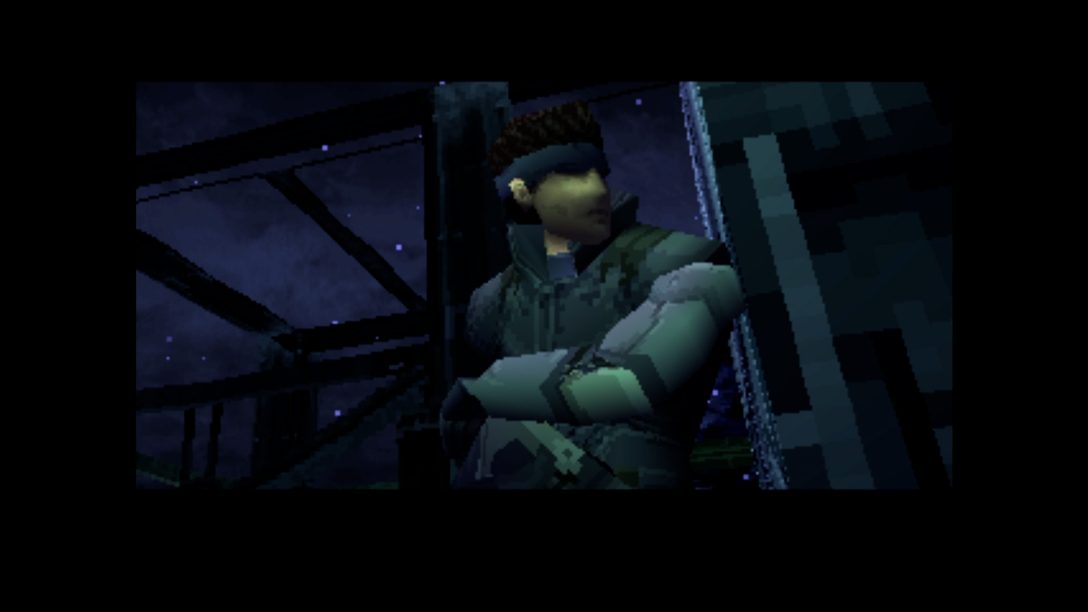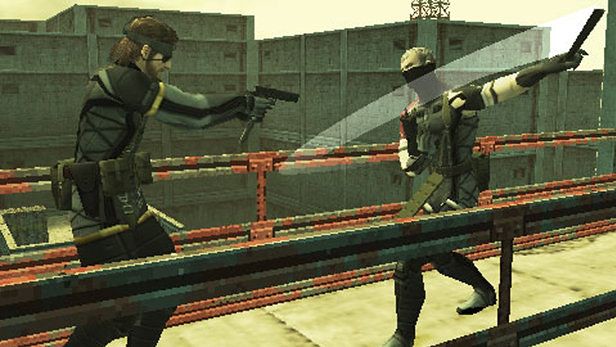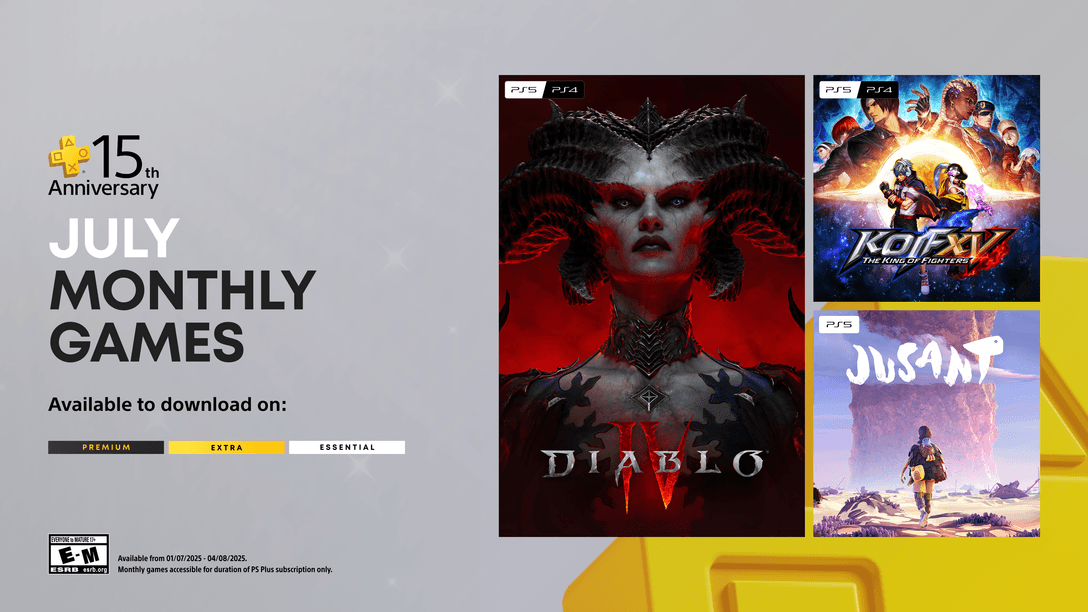
Prepare for the launch of Metal Gear Solid Master Collection Vol. 1 with a look back at the Konami stealth series’ history.
The release of the Metal Gear Solid Master Collection Vol. 1 is just around the corner, out October 24. It’s the perfect opportunity for both longtime Metal Gear-heads and new fans alike to dive deep into Metal Gear’s history. Beginning with the early 8-bit foundations of Metal Gear and Metal Gear 2: Solid Snake up through the PlayStation and PS2 masterpieces Metal Gear Solid, Metal Gear Solid 2: Sons of Liberty, and Metal Gear Solid 3: Snake Eater, players will experience the evolution of tactical stealth gameplay, in-game political intrigue, and complex social themes over time, all in one action-packed package.
Let’s take a look at some key main games in the series—including those included in the Master Collection Vol. 1

Metal Gear
Release Year: 1987
(Included in Metal Gear Solid Master Collection Vol. 1)
The original Metal Gear made a huge splash upon its 8-bit Japanese debut in 1987, releasing internationally a few years later. Metal Gear introduced many of the elements that would come to define the series throughout: Foxhound agent Solid Snake, the eponymous Metal Gear, and stealth-focused gameplay. Snake infiltrates several highly-armed complexes in a high-stakes rescue mission, navigating carefully to avoid detection by foes in a top-down view.

Metal Gear 2: Solid Snake
Release Year: 1990
(Included in Metal Gear Solid Master Collection Vol. 1)
Solid Snake embarked on his second mission in 1990, taking him to Zanzibar Land in a rescue-and destroy mission to take down the Metal Gear D super weapon. More advanced enemy behavior was added, such as reacting to noises the player made and a wider field of view to spot Snake, while players were given more movement skills like kneeling and crawling. While Japan was enjoying this game at the start of the 90s, players abroad would need to wait 16 years for an official release.

Snake’s Revenge
Release Year: 1990
(Included in Metal Gear Solid Master Collection Vol. 1)
Instead, players in North America and Europe got this alternative sequel, made in response to the positive reception of Metal Gear. A mass-production facility manufacturing Metal Gears has been taken over by terrorists, and now Snake must lead a three-man Foxhound unit to infiltrate and secure the facility. Alongside the top-down stealth sections and puzzle-solving that made Metal Gear beloved, Snake’s Revenge also features new side-scrolling action sequences–just one unique twist in a game that’s chock-full of story surprises.

Metal Gear Solid
Release Year: 1998
(Included in Metal Gear Solid Master Collection Vol. 1)
After skipping an entire generation, Metal Gear made a surprise return after the better part of a decade on the PlayStation. For many gamers, this was their introduction to the Metal Gear series–and it turned them into fans for life.
Antagonist Liquid Snake and his crew has hijacked the Alaskan island of Shadow Moses–a secretive weapons complex–and home to the advanced weapon Metal Gear Rex. The legendary agent Solid Snake has been summoned to face down his former teammates at Foxhound. With the aid of Rex’s designer (and recurring Metal Gear series favorite) Otacon, Snake must once again stealthily infiltrate a huge military complex with the fate of the world in the balance.
Using the 3D technology and the CD storage of the PlayStation, Metal Gear Solid was able to present a stunning experience, expanding tremendously on the original 8-bit gameplay and weaving an intriguing story through robust voice acting and cinematic presentation methods that had been impossible just a decade before. Players were also surprised at unique, creative fourth-wall breaking moments, like Psycho Mantis examining Memory Cards to comment on the games players had enjoyed previously and making players solve a puzzle by looking at the back of the game’s case. Metal Gear Solid is still considered one of the most beloved and influential games of all time by many.
Fans hungry for more missions to embark as Snake were treated to the challenge and variety of Metal Gear Solid: VR Missions (1999, a.k.a. Special Missions in PAL regions – also available with Metal Gear Solid Master Collection Vol. 1). The collection also includes Metal Gear Solid: Integral, originally released in Japan as an expanded edition of the game including extra VR missions, difficulty settings, and more.

Metal Gear Solid 2: Sons of Liberty
Release Year: 2001
(Included in Metal Gear Solid Master Collection Vol. 1)
When Metal Gear Solid 2 was announced for the then-upcoming PlayStation 2, the gaming world was set alight. Millions of Metal Gear fans the world over were eager to get their hands on any and all coverage of the upcoming game, which promised to be a graphical and gameplay experience unlike anything yet seen.
Little did anyone know that they were going to be shocked by one of the biggest gaming plot twists of all time. While the pre-release material focused on Solid Snake as the main character, it turned out that the majority of the game instead focused on a completely new character, Raiden–a move which inspired a great deal of discussion, but played perfectly into the game’s themes of information manipulation and perceptions of reality.
MGS2 showcased the PS2’s power to create a murky, mystery-filled world filled with political intrigue and complex themes about information in the digital age. Gameplay-wise, more processing power meant enhanced reactions from enemies, adding more depth to the espionage. Fortunately, new elements like first-person aiming, enemy distractions, and more hiding spots give you plenty of ways to outwit and outrun.

Metal Gear Solid 3: Snake Eater
Release Year: 2004
(Included in Metal Gear Solid Master Collection Vol. 1)
After the intense modern-day drama of MGS2, in 2004 we went back a bit… way, way back to the height of the Cold War between the US and the Soviet Union. In a time fraught with global political tension, operative Naked Snake is sent into the heart of Soviet-controlled territory to take down The Boss, a supremely talented agent who has defected… and Naked Snake’s mother figure.
Breaking from the mostly-indoors environments of previous Metal Gear games, Snake Eater is set in the jungles of southern Soviet territory. This new setting provided some new ways to approach the series’ trademark stealth gameplay, such as outdoor camouflage gear (including the hilariously effective crocodile cap), but also presented new hazards. Close-range combat was revised and expanded with the new CQC (Close Quarters Combat) system, which would continue to be featured in subsequent installments. A new challenge was keeping track of Snake’s stamina, which would gradually drain in the harsh jungle wilderness and could be affected by severe injuries. (Odds are that if you’ve played Snake Eater, you’ve definitely had to feed Snake something odd to keep his stamina up.)
Snake Eater remains a series favorite to many, and with a remake set to debut in the future, now’s a great time to revisit this riveting survival adventure.
Metal Gear Solid: Portable Ops
Release Year: 2006
The PSP debut of the Metal Gear Solid series introduced a new style of stealth gameplay to complement the small screen. In the aftermath of Snake Eater, Naked Snake has been accused of treasonous activity and imprisoned. He escapes and sets out to reveal the current rogue leader–but he’ll need to recruit a team of soldiers to do so. What sets Portable Ops apart from other games in the series is its focus on squad-based operations. Players control one character out of a squad of four, each with unique abilities, changing at swap points as necessary to complete missions.

Metal Gear Solid 4: Guns of the Patriots
Release Year: 2008
The saga of Solid Snake drew to its end in 2008 as Metal Gear Solid 4 released on PlayStation 3. From the outset, MGS4 was used as a showcase of the PS3’s cutting-edge HD visuals, garnering attention and praise even before the console went on sale.
Debuting to massive fan expectations, MGS4 fulfilled its promise as a graphical and gameplay powerhouse. Even now, the PS3 original still looks stunning, showcasing a tumultuous world in the throes of large-scale military combat. Elements like the advanced-camouflage OctoCamo and the feature-changing FaceCamo were key showcases for the hardware.
Switching from the third-person overhead view of previous installments to more traditional action game camera gives players a sense of chaos all around them. Not only do players have to utilize Snake’s stealth and combat skills, but also keep control of his troubled Psyche. A complex and challenging story helps deliver a more than fitting final mission for a gaming icon.

Metal Gear Solid: Peace Walker
Release Year: 2010
A hidden gem of the Metal Gear saga, Peace Walker was developed for the PSP in 2010 before eventually making its way to the PlayStation 3 in 2011. It’s the mid-70s, and Costa Rica is under siege. Big Boss and his army, the Militaires Sans Frontieres, are tasked with freeing the country. Peace Walker builds upon Portable Ops’s recruitment system while also bolstering multiplayer. For the first time, players can take on their stealth missions with other players in co-op operations, which opens up a wealth of new actions designed for the comrades-in-arms to aid each other–all while keeping established Metal Gear staples like stealth and CQC. It’s a key game in the development of future Metal Gear titles, both gameplay- and story-wise.

Metal Gear Rising: Revengeance
Release Year; 2013
While fans took time to digest Raiden’s debut in Metal Gear Solid 2, there’s no denying that by Metal Gear Rising the agent had become beloved by many. Enter Revengeance, a collaboration between series’ developer Kojima Productions and the stylish-action wizards at Platinum Games. Now decked out in the array of Cyborg Ninja-esque enhancements he was given in Metal Gear Solid 4, Raiden drops any pretense of stealth and instead uses his high-frequency blade to cut through every foe that stands in his way. Despite being a marked departure from the familiar Metal Gear stealth, the intense, over-the-top action gameplay, packed with stunning setpieces and an ensemble cast of wickedly memorable villains, won over old and new fans alike.

Metal Gear Solid V: Ground Zeroes
Release Year: 2014
The story of Metal Gear Solid V is so grandiose and ambitious that it took two games to contain. Ground Zeroes, released in 2014, served as the connecting tissue between Peace Walker and The Phantom Pain. It’s a shorter adventure than most of the other MGS titles, but its main mission and side missions offer plenty of the stunning visuals and strategic stealth and combat gameplay fans have come to love along with plenty of juicy story bits to chew on. Ground Zeroes is a first taste of the more open-world structure that would define Phantom Pain, giving players a huge variety of options to infiltrate Camp Omega. It’s a perfect appetizer for the main course, which came a year later.

Metal Gear Solid V: The Phantom Pain
Release Year: 2015
And finally, released in 2015, we have Metal Gear Solid V: The Phantom Pain, one of the most-acclaimed PlayStation 4 games of all time. Expanding greatly upon the open-world mechanics first seen in Ground Zeroes, The Phantom Pain opens with Big Boss awakening after a nine-year coma and taking up the mantle of “Venom Snake” to lead a new mercenary group, the Diamond Dogs.
As you travel through the sprawling environments of Soviet-controlled Afghanistan–on foot, on horse, even on tank–you’ll find myriad ways to explore, progress the story, and approach combat through both traditional stealth gameplay and CQC combat. The new buddy system allows Venom Snake to call upon AI-controlled companions on missions, forming bonds with them, as well as finding members to staff Mother Base in an expansion on Portable Ops and Peace Walker’s recruitment system.
In addition to its sprawling single-player mode, The Phantom Pain also offers two online gameplay modes: the competitive Metal Gear Online and a unique “Forward Operating Bases” base-building mode, where players can establish a facility to generate resources for the single-player game–which must be defended from invading players.
For longtime Metal Gear fans – what was your jumping-on point for the stealth franchise? And for newcomers, what will be your first mission when the Metal Gear Solid Master Collection Vol.1 launches on October 24?












Comments are closed.
15 Comments
Loading More Comments